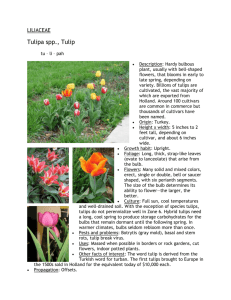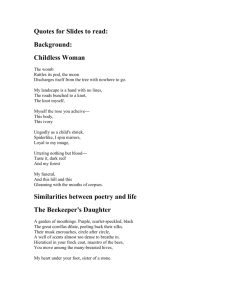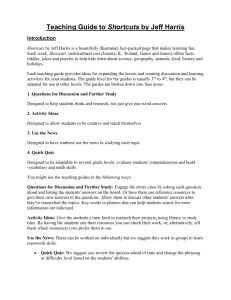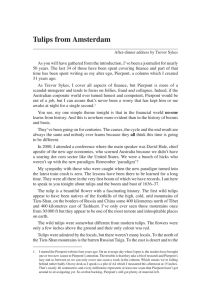Chinook Observer, WA 09-20-06
advertisement
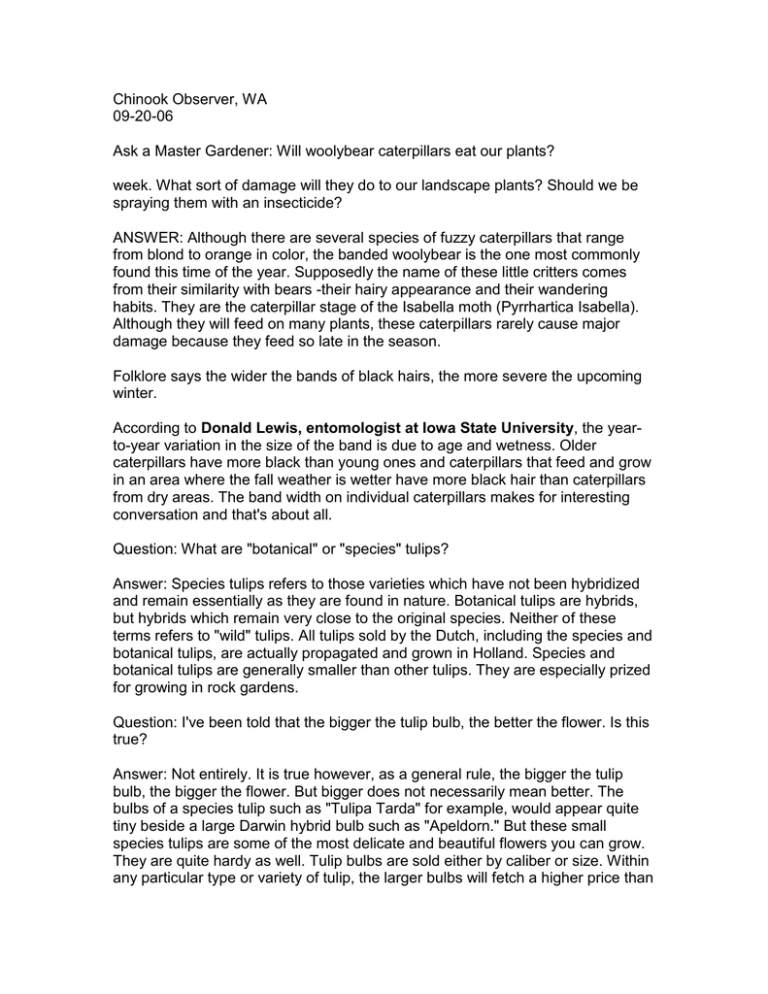
Chinook Observer, WA 09-20-06 Ask a Master Gardener: Will woolybear caterpillars eat our plants? week. What sort of damage will they do to our landscape plants? Should we be spraying them with an insecticide? ANSWER: Although there are several species of fuzzy caterpillars that range from blond to orange in color, the banded woolybear is the one most commonly found this time of the year. Supposedly the name of these little critters comes from their similarity with bears -their hairy appearance and their wandering habits. They are the caterpillar stage of the Isabella moth (Pyrrhartica Isabella). Although they will feed on many plants, these caterpillars rarely cause major damage because they feed so late in the season. Folklore says the wider the bands of black hairs, the more severe the upcoming winter. According to Donald Lewis, entomologist at Iowa State University, the yearto-year variation in the size of the band is due to age and wetness. Older caterpillars have more black than young ones and caterpillars that feed and grow in an area where the fall weather is wetter have more black hair than caterpillars from dry areas. The band width on individual caterpillars makes for interesting conversation and that's about all. Question: What are "botanical" or "species" tulips? Answer: Species tulips refers to those varieties which have not been hybridized and remain essentially as they are found in nature. Botanical tulips are hybrids, but hybrids which remain very close to the original species. Neither of these terms refers to "wild" tulips. All tulips sold by the Dutch, including the species and botanical tulips, are actually propagated and grown in Holland. Species and botanical tulips are generally smaller than other tulips. They are especially prized for growing in rock gardens. Question: I've been told that the bigger the tulip bulb, the better the flower. Is this true? Answer: Not entirely. It is true however, as a general rule, the bigger the tulip bulb, the bigger the flower. But bigger does not necessarily mean better. The bulbs of a species tulip such as "Tulipa Tarda" for example, would appear quite tiny beside a large Darwin hybrid bulb such as "Apeldorn." But these small species tulips are some of the most delicate and beautiful flowers you can grow. They are quite hardy as well. Tulip bulbs are sold either by caliber or size. Within any particular type or variety of tulip, the larger bulbs will fetch a higher price than the smaller ones. For big, showy displays, the larger caliber bulbs are certainly worth the price. Question: What is the best way to tell when a houseplant should be watered? Answer: The best way is to feel the soil mix with your finger tip. If it is cool, and barely moist to the touch, the plant is considered moderately moist. If the soil mix is slightly moist, or questionable, it is best to wait another day or two and retest before watering. Another effective method to determine when to water is to use the weight of the container. A dry container and soil mix will be lightweight compared to one that has just been watered. Most plants do well when the soil mix is "moderately moist." After watering thoroughly, allow the soil mix to dry to a slightly moist condition before watering again. Completely saturate the soil mix with water to fill all of the pore spaces. Pour enough water into the pot that it drains out through the drainage hole. This method is also beneficial in leaching out excess fertilizer salts in the soil, which build up over time. It also exchanges the air in the soil mix. Do not allow drainage water to seep back into the soil mix; empty the saucer of excess water as soon as the container drains completely.
